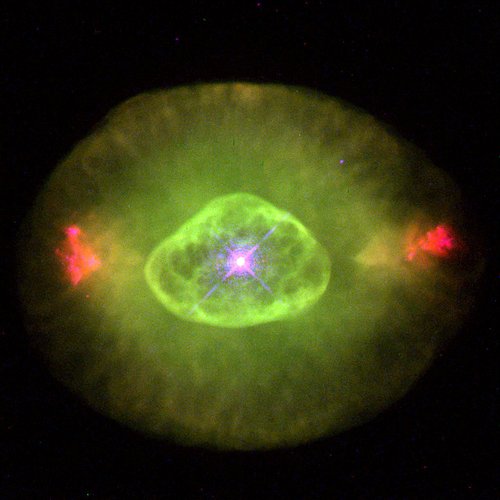Current Info for Observer
as of 04/25/2024 2:31 p.m.
Please login to view current observation details
General Info
| Type | Planetary Nebula |
| Constellation | Cygnus |
| Right ascension | 19h44.800'48'' |
| Declination | +50°31'31'' |
| Magnitude | 10 |
| Size | 0.450 arc min |
| Catalog Designations | NGC6826 |
| Discovered | 1793 William Herschel |
Generate a finder chart
The following form will generate a PDF finder chart suitable for printing using to locate objects in the sky with your telescope!
The Date is only really useful for solar system objects, as deep space objects move measurably only on a galactic timescale.
The larger the F.O.V (field of view), the more "zoomed out" the object will appear. It can be helpful to print several charts of the same object with different field of views.
Limiting the magnitude (remember, lower magnitude means brighter!) of stars and objects can make sure your chart is not cluttered with dim objects that you may not be visible to you anyway. The defaults are good, but try experimenting with raising and lowering the values.
Celestron Omni XLT 150
1 points
Very cool, at 90x you can make out a small disc shaped object that disappears when you look at it, hence the blinking.
XX12i
0 points
Wrapped up the PN observations with this fun object. Best seen without any type of filter, as the 'blinking' nature disappears under the filter. A good outreach object to show newcomers with a star right next to it to quickly teach averted vision and show off the 'blink'.
XX12i
1 points
The Blinking Nebula, with the moon washing out other dim DSO I had planned to sketch I took a look in an area away from the moon. The blinking nebula lived up to its name -- Without the ultrablock filter the nebula 'blinks' away when you look directly at the central star, and 'blinks' back into view with averted vision. With the ultrablock filter the blinking goes away, the nebula holds steady with direct vision, but I can no longer make out the central star. A tradeoff in views.
Please login to post comments
